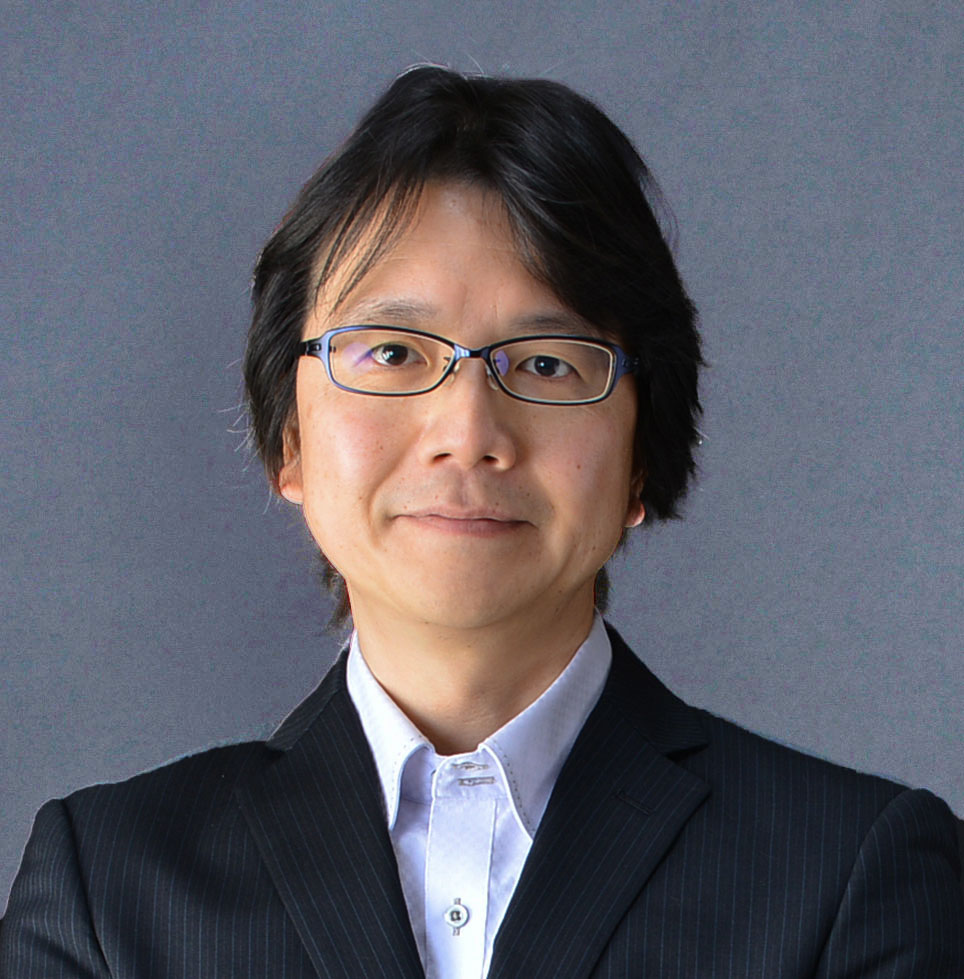Public Lecture
Information
- Date & Time : Aug. 20 & 23, 13:20-
- Place : B
- Important Information
- No reservation is required. Please come directly to the venue on the day.
Public Lecture 1 on Aug. 20
[13:20-14:30] Prof. Kokichi Sugihara
Meiji Institute for Advanced Study of Mathematical Science, Meiji University

Title
Impossible World Represented by Real 3D Objects
Abstract
Escher presented the impossible world by 2D pictures, while we present it using real 3D objects. A mathematical model of the human vision and optical illusion enables us to create 3D objects whose behaviors look impossible. The illusion is strong so that we can enjoy even when we see them by two eyes.
Early 3D realizations of impossible figures are valid only when we see them from the specific viewpoint with a single eye, and hence they were almost equivalent to 2D pictures. Our impossible objects, on the other hand, are true 3D realizations in the sense that the viewpoint is not strictly restricted.
Profile
Kokichi Sugihara is a Meiji University distinguished professor emeritus. His research area is mathematical engineering. In his research on computer vision, he found a method for constructing 3D objects from “impossible figures”, and extended his research interest to human vision and optical illusion. He is acting also as an illusion artist by creating various impossible objects. He won the first prize four times in the Best Illusion of the Year Contest.
[14:45-15:30] Prof. Noboru Kikuchi
President of Toyota Konpon Research Institute
Managing Director of Toyota Physical and Chemical Research Institute
Roger L. McCarthy Professor Emeritus of Mechanical Engineering, University of Michigan
Title
Safety and Feel Safety Induced by Applied Mathematics in Automotive Industry Toward Autonomous Automation
Abstract
Founders of TOYOTA dreamed “Flying Nimbus” that is a magical flying cloud in Chinese classic literature “Journey to the West, Saiyuki.” When I was told about this look-like very childish dream by Dr. Shoichiro Toyoda at the visit to Toyota Central R&D Laboratories while I was working in University of Michigan, I was so impressed by the dream that he storied through Flying Nimbus. It is a sustainable safe and feel safe vehicle made from water and air! Dr. Toyoda asked me to lead advanced research for Flying Nimbus with extremely charming smile. Researchers must be realistic, but they are so dreamy, too.
In this talk, various struggling stories would be presented with so many failing so few successful trials to implement this notion in real vehicles applying all possible science and technology, especially computer related applied mathematics. Through this dreamy venture, we have leaned enormous difference between safety and feel safety together with clear distinction between personal and social acceptance. Applied mathematics, especially computer related science and technology including artificial intelligence, would be a key potential remedy to close the gaps mentioned.
[15:45-16:30] Prof. Padmanabhan Seshaiyer

Title
Understanding the Dimensions of Justice, Equity, Diversity and Inclusion (JEDI) across the globe in Applied Mathematics Research and Education
Abstract
In this talk, the participants will engage in learning about integrating equitable practices for advancing their understanding of racial equity in applied mathematical research, education and outreach. Discussions will include the impact of unconscious bias which is influenced by cultural stereotypes that affect how individuals evaluate and treat one another. These often continue to impact both universities and workplace environments across the globe. Another important discussion will include the different perspectives of justice, equity, diversity and inclusion (JEDI) in the applied mathematics community which are often exhibited by power inclusive behaviors in different cultures. We will also discuss effective use of applied mathematics tools and techniques to address systemic inequality and to reduce variations in judgment across humans that require more than just the adoption of the right technical approaches to the right data sets about people, institutions, communities, and systems. Finally, we hope that the session will help to empower participants with the latest scientific findings on the learning characteristics of underrepresented populations, understand the different approaches to JEDI across the globe, gain awareness of cultural differences and employ an inclusive, equitable and culturally relevant pedagogy in applied mathematics education and research.
Dr. Seshaiyer is the Chair of the SIAM Diversity Advisory Committee that consists of distinguished members from the Applied Mathematics community across the globe who assist SIAM in addressing policy issues that arise in relationship to underrepresented groups. As the Chair, he helps to oversee the working group for the Workshop Celebrating Diversity that is held each year at the SIAM Annual Meetings. He continues to promote the much-needed awareness of justice, equity, diversity and inclusion (JEDI) across the globe through his work as he prepares students to become critical thinkers and global problem solvers in applied mathematics.
Profile
Prof. Padmanabhan (Padhu) Seshaiyer is a tenured full Professor of Mathematical Sciences at George Mason University, USA and works in the broad areas of Computational and Applied Mathematics, Computational Data Science, Computational Biomechanics and STEM Education. During the last two decades, he has initiated and directed a variety of educational programs including faculty development, post-graduate, graduate and undergraduate research, K-12 outreach, teacher professional development, and enrichment programs to foster the interest of students and teachers at all levels to apply well-developed research concepts, to fundamental applications arising in STEM disciplines. He has served in multiple leadership positions including serving as the Chair for the Diversity Advisory Committee for SIAM, Chair-Elect for US National Academies Commission for Mathematics Instruction, Associate Director in Applied Mathematics for the Mathematics Alliance Program and an appointed member of the STEM Advisory Board to the Office of the Governor of Virginia. He has also served as a former Program Director at the US National Science Foundation. Over the last two decades, he has won several prestigious national and international awards and honors for his contributions to research, teaching and service. Most notably in 2019, he was selected as “Figures that Matter” and was awarded an honorary doctorate from Vrije Universiteit Brussel for being a committed scientist who transcend the boundaries of their own disciplines and to personalities that have been at the frontiers of societal change. In April 2022, SIAM spotlighted him as one of the most influential mathematicians in the community during the Mathematics and Statistics Awareness Month.
Public Lecture 2 on Aug. 23
[13:20-15:00] Prof. Jun Mitani
University of Tsukuba

Title
The Possibilities of Origami: Art, Mathematics, and Applications in Engineering
Abstract
Origami is a traditional art form of Japan with a rich history. Simple and beautiful creations such as the origami crane and paper boat are iconic symbols of this art. However, origami is not only admired for its beauty but also for its complexity and mathematical aspects. Furthermore, the folding characteristic of origami proves to be a functional feature in engineering, making it promising for industrial applications. In this lecture, the historical background of origami will be explored, and the speaker will explain how it is intricately connected with mathematics and how it’s being applied in various industries. Additionally, we will discuss the evolution of origami design through the utilization of computers. The speaker will introduce the techniques they have developed for creating shapes with curved surfaces and at the end of the lecture, participants will have the opportunity to experience folding origami using curves.
Profile
Mitani is a professor of Information and Systems at University of Tsukuba. He received his Ph.D. in engineering from the University of Tokyo in 2004. He has been present post since April 2015. His research
interests center on computer graphics, in particular geometric modeling techniques and their application to curved origami design.
